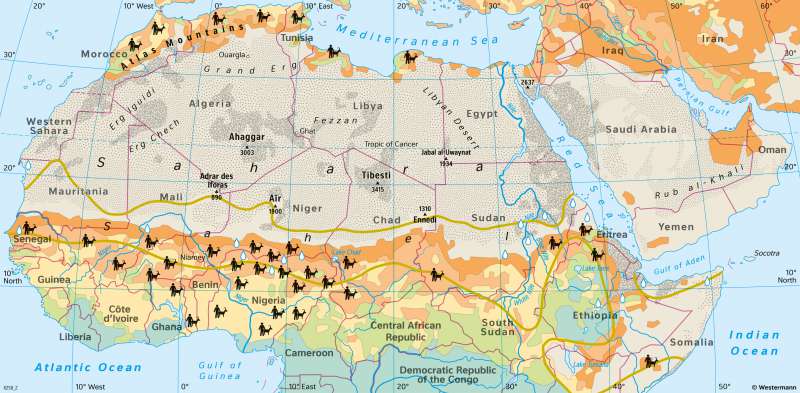Sahara and Sahel - Desert landforms
Vegetation and agriculture
978-3-14-100890-6 | Page 149 | Ill. 2

Overview
Desertification is a process of progressive degradation of the productive capacity of symbiotic nature-human systems, which are mainly characterised by a high degree of adaptation to arid and semi-arid conditions. In its final state, it leads to the emergence of "man-made deserts". The main causes of desertification are deflations of soil in areas with loose soils, soil washing and soil skeletonisation in mountainous regions, and finally soil salinisation in areas with excessive irrigation and poor drainage or with non-adapted irrigation methods.
Desertification in Northern Africa
The map shows that large parts of Africa and Western Asia are now moderately to very severely affected by desertification. On the one hand, this includes practically all desert fringe areas such as semi-deserts, steppes, and briar savannas, where the destruction of soil and flora can no longer be compensated for by natural regeneration. On the other hand, these are areas with a more favourable natural environment, such as the dry savannas of the southern Sahel, which are used more intensively by humans than the regions to the north. Such areas are now severely affected by excessive overgrazing, the expansion of arable land and deforestation. Since the chances of successfully fighting desertification in developing countries are slim to moderate at best due to the lack of capital there, many processes must be regarded as irreversible.
more



